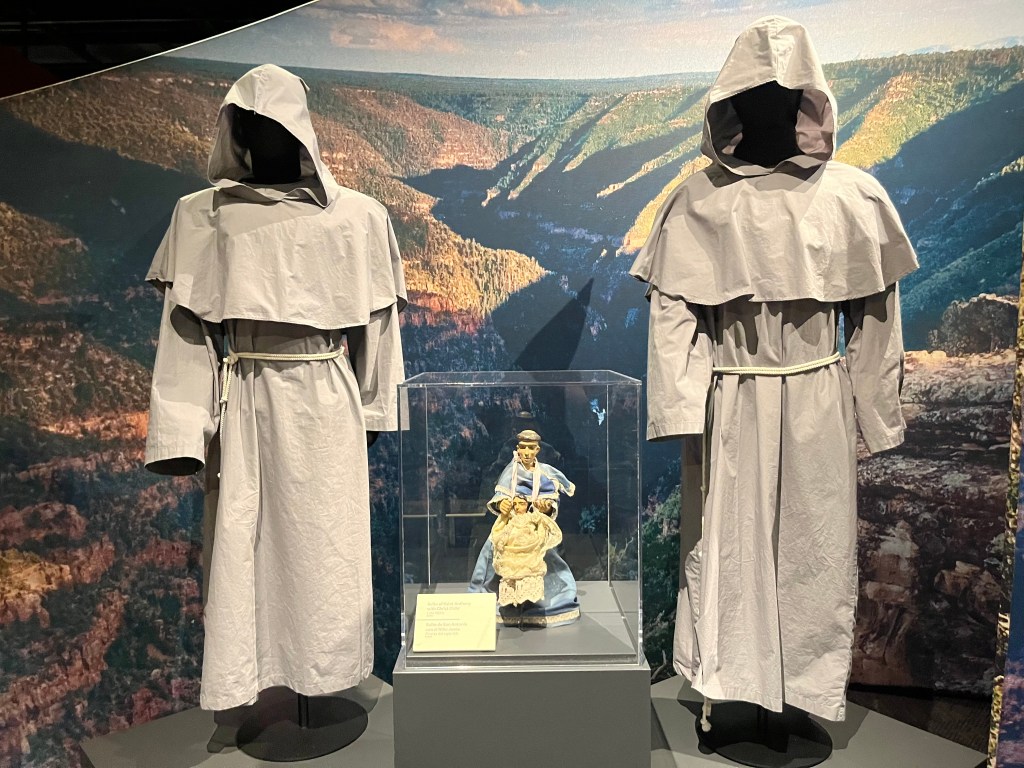A new exhibit at the History Colorado Center titled “Expedition 1776: The Journey of Domínguez & Escalante” delves into the perilous journeys of two Franciscan priests who explored the American Southwest. Opening to the public, the exhibit combines artifacts, maps, and narratives to recount the expedition that took place during a pivotal year in U.S. history, starting on July 29, 1776. This was the same year the American colonies declared their independence from Britain.
The exhibit aims to present a comprehensive view of the expedition, highlighting both its adventurous spirit and the consequential impact on Indigenous populations. As visitors explore, they encounter the complexities of early exploration, which involved not just the discovery of new lands but also the unsettling realities of colonial expansion.
Exploring the Journey
The journey led by Fathers Francisco Atanasio Domínguez and Silvestre Vélez de Escalante covered present-day New Mexico, Colorado, Utah, and Arizona. The exhibition features a range of artifacts, including religious totems, clothing worn by clergy, and tools used by explorers of the time. The display also includes weapons such as a musket and a Spanish pistol, underscoring the dual purpose of the expedition: to convert Indigenous peoples to Christianity while being prepared for potential conflict.
As the exhibition text emphasizes, the priests faced significant challenges during their five-month journey. They navigated treacherous terrain, extreme weather conditions, and the complexities of interacting with local tribes. Their primary mission was to preach Christianity to Indigenous communities, which they believed was a matter of eternal significance.
Artifacts and Maps Illuminate History
The exhibit showcases a carefully curated collection of artifacts from both European explorers and Native American cultures, allowing visitors to gain insight into the perspectives of both groups. Items on display include ceramic jars and baskets from Indigenous communities, juxtaposed with explorers’ tools such as a tobacco pouch and cooking griddle. This thoughtful arrangement highlights the cultural exchanges — and tensions — that characterized the early encounters between these two worlds.
Another focal point of the exhibit is the collection of maps created by Bernardo de Miera y Pacheco, who accompanied the expedition. His stunning maps not only documented geographical features but also influenced colonial settlements and trade routes for generations. The exhibition illustrates the evolution of mapping techniques, showcasing how early explorers relied on a mix of observational data and creative interpretation to chart unknown territories.
While the maps served as essential tools for colonization, they also perpetuated narratives that disregarded Indigenous sovereignty. The exhibit’s text points out that these maps “highlighted resources and geography while disregarding Indigenous sovereignty, portraying the West as land to be claimed.” This critical perspective invites visitors to reflect on the broader implications of exploration and expansion.
“Expedition 1776: The Journey of Domínguez & Escalante” successfully balances the adventurous spirit of the explorers with a nuanced understanding of their actions and the repercussions for Indigenous communities. The exhibit not only captivates audiences with its historical narrative but also encourages a dialogue about the complexities of American history.
The exhibit is on display until August 2, 2026, providing ample time for visitors to engage with the rich and often conflicting narratives of early American exploration. For more information, the public can contact the History Colorado Center at 303-447-8679 or visit their website at historycolorado.org.
